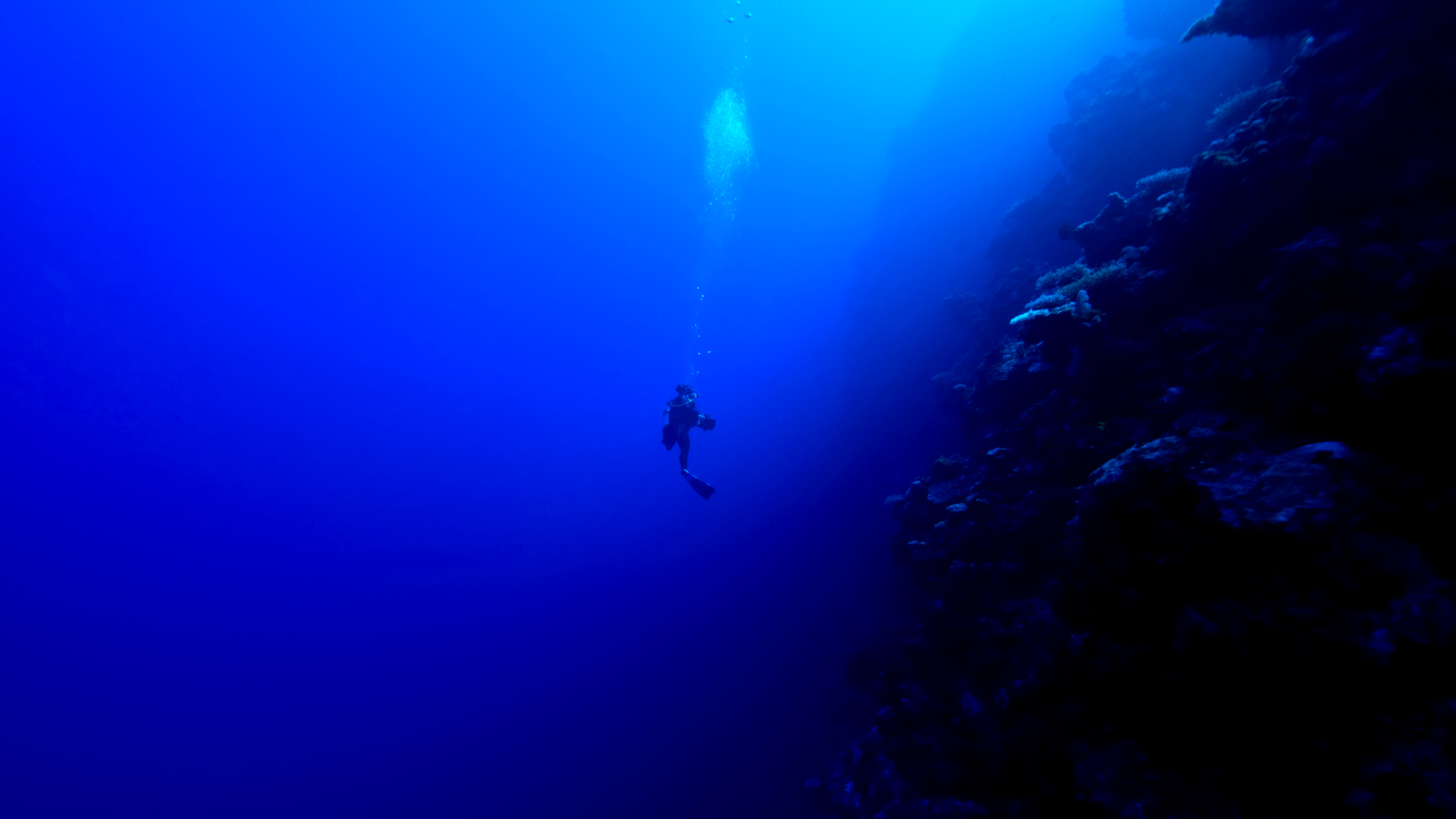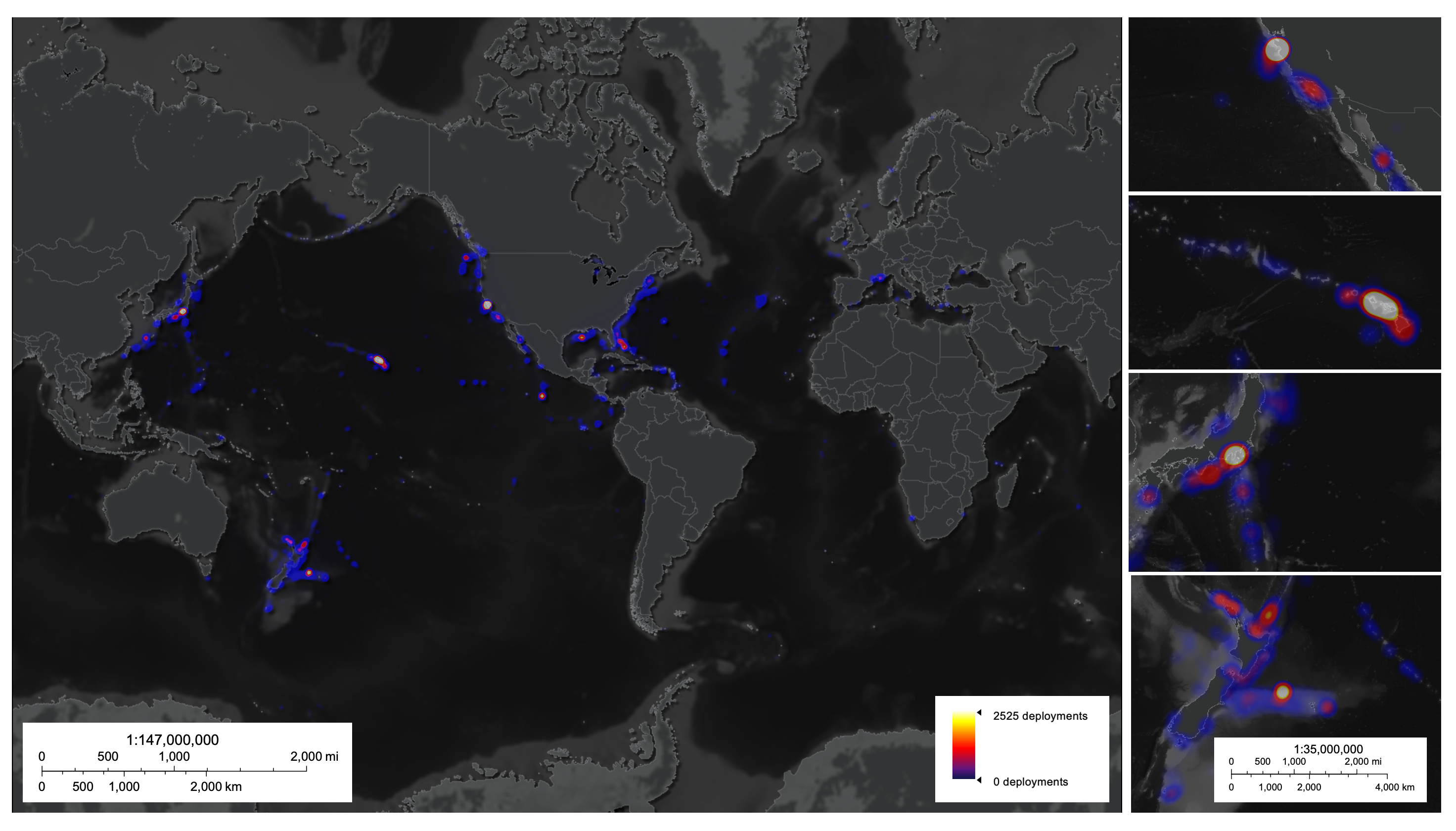Only 0.001% of deep ocean has ever been explored by humans — an area equal to the size of Rhode Island
Despite the deep ocean floor coating some 66% of our planet's surface, we haven't explored 99.999% of it, study finds.

Scientists have revealed how much of the vast deep ocean floor humankind has observed, and it's a staggeringly small amount.
According to a new study published May 7 in the journal Science Advances, just 0.001% of the deep seafloor (anything below 656 feet, or 200 meters) has been explored — despite it covering about two-thirds of Earth's surface. This area is roughly equivalent to the size of Rhode Island.
"There is so much of our ocean that remains a mystery," Ian Miller, chief science and innovation officer at the National Geographic Society, which contributed to the study's funding, said in a statement. Miller was not himself an author of the study.
The deep ocean floor is characterized by immense pressure and near-freezing temperatures, and is home to a variety of strange and often elusive creatures. It plays a crucial role in carbon storage, and is believed to host many unknown species — some of which could be medically or scientifically valuable.
Most of what we know about this seafloor is based on visual imaging from manned submersibles, remotely operated vehicles (ROVs), autonomous underwater vehicles (AUVs), or tow cameras tethered to ships.
In the new study, researchers analyzed the proportion of deep seafloor that had been visually explored by compiling 43,681 records of deep sea dives that included optical imaging.
They used two methods to estimate how much of the deep seafloor had been observed by humans, one tracking the path of vehicles along the seafloor used in each dive, and the other using time spent by the vehicle at the ocean floor. For the dive path method, they estimated that a total of 822 square miles (2,129 square kilometers) had been observed. Using the time-based method, they estimated a visual seabed coverage of 1,476 square miles (3,823 sq/km).
Get the world’s most fascinating discoveries delivered straight to your inbox.
Related: What percentage of the ocean have we mapped?
The researchers concluded that over the course of all our deep sea exploration, we have only observed between 0.0006 to 0.001% of the deep seafloor since 1958.
These estimates are based only upon seafloor observations from accessible records however, and the researchers note that oil and gas and telecommunication companies may have explored much more of the seafloor, but not made these records public.

"As we face accelerated threats to the deep ocean — from climate change to potential mining and resource exploitation — this limited exploration of such a vast region becomes a critical problem for both science and policy," study lead author Katy Croff Bell, president of the nonprofit organization Ocean Discovery League and National Geographic Explorer, said in the statement.
"We need a much better understanding of the deep ocean's ecosystems and processes to make informed decisions about resource management and conservation," she said.
Additionally, they found that 65% of all these observations of the deep seafloor had been carried out within 200 nautical miles (230 miles) of the coast of the U.S., Japan, or New Zealand, and 97% of recorded deep-sea dives had been performed by only five countries: the U.S., Japan, New Zealand, France, and Germany.
The researchers also noted that geomorphological features like ridges and canyons saw a disproportionate amount of exploration, compared to areas such as abyssal plains and seamounts.
"If the scientific community were to make all assumptions about terrestrial ecosystems from observations of 0.001% of [the entire land area of Earth], it would equate to an assessment area … smaller than the land area of Houston," the authors wrote in the paper.
The bias in areas of the ocean floor that have been explored, and by whom, further limits our understanding of the entire seafloor, the researchers added. The researchers express a need for a more global effort to explore a wider range of the ocean floor and its features in order to truly understand and protect this little-known environment.
"Deep-sea exploration led by scientists and local communities is crucial to better understanding the planet's largest ecosystem," Miller said. "If we have a better understanding of our ocean, we are better able to conserve and protect it."

Jess Thomson is a freelance journalist. She previously worked as a science reporter for Newsweek, and has also written for publications including VICE, The Guardian, The Cut, and Inverse. Jess holds a Biological Sciences degree from the University of Oxford, where she specialised in animal behavior and ecology.
You must confirm your public display name before commenting
Please logout and then login again, you will then be prompted to enter your display name.


